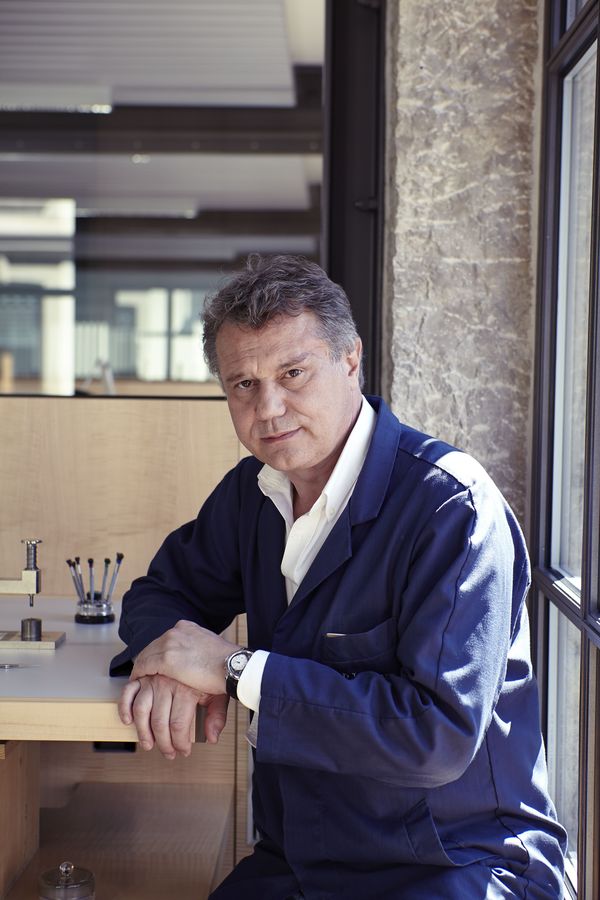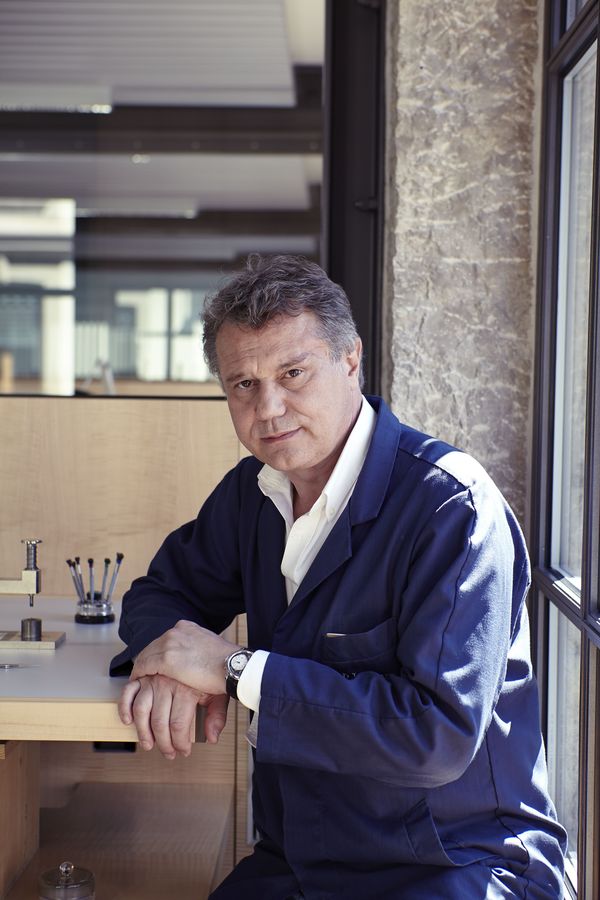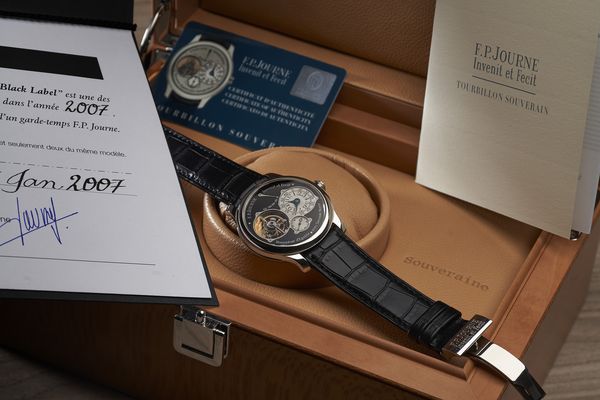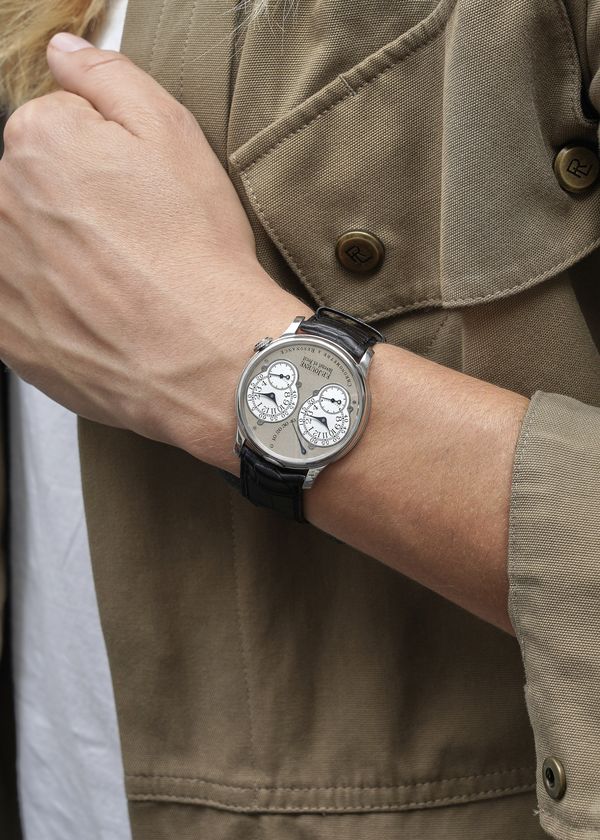If we look at today’s watchmaking industry, there are, quite literally, hundreds of brands that are vying for our attention, with many who would certainly like to see their names mentioned in the same vein as that of the founding fathers of haute horology. The glass ceiling, as it were, is present though, and it takes a high degree of self-confidence, creativity, and, it must be said, luck to break through it. It’s even more rare when the technical achievements are also met with a business sense and a long-term vision beyond the delivery of the next novelty. François-Paul Journe has certainly achieved the above, through a career built on decades of perseverance and foresight. What makes his story particularly fascinating though is that his path to becoming a modern master was so unusual.
Born in Marseille in 1957, young François-Paul showed an aptitude towards understanding how machines worked, but he was an unruly child in a city that was known for its rambunctiousness. He had little respect for authority, and would be more adept at disrupting class than contributing to it. That is, until his uncle Michel, a watchmaker and clock restorer based in Paris, took him under his wing. A first attempt at watchmaking school in Marseille saw young Journe be expelled after two years, with a recommendation to give up on watchmaking. Undeterred, Michel brought François-Paul to Paris, and got him enrolled in the Pierre Girard School of Watchmaking, splitting this time between classes and furthermore learning in his uncle’s workshop through the restorations in progress. Marking a complete turnaround in just two years, he obtained his certificate of professional competence in watchmaking in 1976, with high marks.
When his uncle retired in 1985, Journe set up his own workshop as he preferred to develop wristwatches rather than restore clocks. His focus was on special commissions, originally for private collectors, until word-of-mouth led to established brands such as Cartier, Chaumet and Piaget knocking on his door for their own watchmaking projects. He had also been attending Baselworld, as a member of the Académie Horlogère des Créateurs Indépendants (AHCI), even though he did not have his own watches to display yet. He would wear the tourbillon with remontoir d’égalité wristwatch he built for himself in 1991, and it was getting increasingly noticed, which convinced him that he should launch his own brand. With insufficient funds on hand to produce the watches, he relied on a subscription model, which Breguet had also used in his time, whereby collectors would pay him a significant deposit towards the watch with delivery due at a later date. In 1997, with his name already known to a number of well-heeled friends and collectors, he was able to earn commissions for the first 20 Tourbillon Souverain watches. They were formally launched just two years later, at Baselworld, where he was still in attendance with the AHCI.
Along with the tourbillon, Journe had been fascinated by a phenomenon that Breguet, Antide Janvier and Christian Huuygens had studied but never fully understood, one where two identical time delivery mechanisms, such as pendulums or balance wheels, placed in juxtaposition would, somehow, find a way to synchronise. Journe would dub this phenomenon resonance, and used it to create a second subscription series of 20 watches, the Chronomètre à Résonance, which was launched just a year later, at Baselworld in 2000, but this time with Journe taking his own space within the exhibition. The rest, as they say, is history.
Journe is certainly not one to rest on his laurels, as he is always working on several designs simultaneously, depending on what stirs his interest at the time. On the foundations of two core collections, Souveraine and Octa, he tackled a number of classical complications, but he would also be intrigued by unconventional ones, such as the Octa Zodiaque, which instead of months displays the current astrological sign; this watch would also stand out as it would be the last series equipped with a brass movement, before Journe decided all his calibres would be crafted in rose gold from 2004 onwards.
Another defining characteristic is that Journe works at his own pace, and is quite satisfied with the number of watches that are produced each year at his manufacture, one of the few that are still based within Geneva. Collections evolve over time, but do not overlap; rather, he will retire them whenever a new adaption is ready to be launched. He marks the significant transitions with special pieces, such as when he decided that he would no longer make 38mm watches, and on that occasion produced a 38 commemorative sets of five steel-cased 38mm watches, each with one of his signature constructions: Tourbillon Souverain, Chronomètre Résonance, Octa Automatique, Chronomètre Souverain, and Octa Calendrier.
There are still occasional sparks of the irreverence that characterized his youth, but you can be assured that he has toiled many hours on every detail of his timepieces, technically and aesthetically, just as he did when he set out to build his first watch, thinking at the time that it would be the only way he could own one. It’s this particular formula that has made an F.P. Journe watch so desirable, a personal touch that embodies this fascination he developed for wristwatches during his formative years, and a genuine respect for those that nurtured that interest, from the friends and partners that have guided him, and the works of the historic masters that served as inspiration




